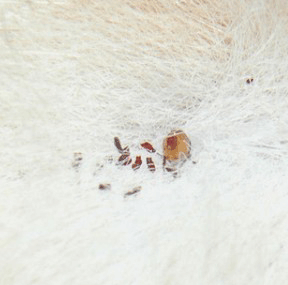In this piece is all the information you’ll need to know about flea collars as a pet parent before using flea collars to safeguard your pets from flea infestations. Given the current trend in flea treatment, the use of collars has become slightly outdated as topical and oral medications have become the order of the day. Nonetheless, flea collars still remain highly effective for preventing flea infestations on your cats and dogs.
How Flea Collars Work

Recently, flea collars have been developed to effectively prevent flea infestation for an interval of more than six months. They perform two essential functions that include:
- Repellent: Flea collars act as flea repellents by giving out a pet-neutral gas that wards off fleas.
- Treatment: Some other types of flea collars have a particular flea medication infused in them. This medication slowly passes into a pet’s body either through a layer of fat found underneath its skin or through its natural lubricants.
While most flea collars perform either of the above functions, others perform both functions. Just ensure you understand the instruction and descriptions written on their containing boxes. Repellent collars might include words like ‘keep fleas away’ while treatment collars may use words like ‘kills fleas. It is important you know what the flea collar does.
Advantages of Flea Collars
- Flea collars are long-lasting
- Given that fleas are fond of staying around an animal’s neck and collars are also worn around the neck, flea collars are very effective preventive and curative measures for fleas.
- They’re relatively cheaper. However, you should consult your vet before buying flea collars as the comparatively cheaper ones tend to be less effective. Also, it is important to know what ingredients the flea collar contains.
The Most Effective Way to Use Flea Collars
- As soon as you’ve completed a flea treatment plan for your house and pets, it becomes the best time to get flea collars. Use them on your pets and then place one in your vacuum bag so that it can kill any flea you pick up around your house afterwards.
- Once there is a risk of a flea infestation, let your pets use the collar. As an illustration, if you’re taking a walk with your dog, he should use a collar if you’re likely to walk through spots that are prone to flea infestations.
Also, let your pets take these collars off if they’re already on other flea medications or if the risk of an infestation no longer exist. This is because the neurotoxins used in these collars become harmful to your pets at higher doses (i.e after long intervals).
Popular Active Substances in Flea Collars
There are certain chemical substances contained in flea collars that make them as effective as they are. They include:
- Pyriproxifen: This chemical renders fleas infertile thereby slashing their rate of reproduction as fast as possible.
- Deltamethrin: This is a derivative of Pyrethrin extracted from chrysanthemum flower, and it happens to be one of the harmless insect-killing chemicals in the market.
- Propoxur: This chemical induces an immediate collapse of a flea’s nervous system making it to die within one day. Children should be kept away from collars that contain this substance and also ensure to wash your hands thoroughly after placing the collar on your pet as Propoxur is very toxic for humans.
- Amitraz: This substance is more common in collars produced for flea treatment. Studies have shown it to be a highly effective anti-parasitic chemical.
Collar Ingredients to Steer Clear from
Tetrachloryinphos
There is no doubt that this substance is very effective in killing pests, but it is also highly toxic to humans and pets as studies have suggested that it may be carcinogenic.
Disadvantages of Flea Collars
- Fleas are known to live mostly on the necks and tails of pets, and considering that collars are usually worn on the neck alone, this means that flea prevention and treatment around the tail may not be effective when collars are involved.
- You may be putting your children’s health at risk when you use flea collars for pets your children touch often. They may ignorantly place their hands in their mouths after touching pets that are wearing flea collars and this is likely to severely affect their health.
- When you have more than one pet, and they are in the habit of playfully biting each other, you might end up putting their health at risk if you decide to use flea collars to protect them from fleas.